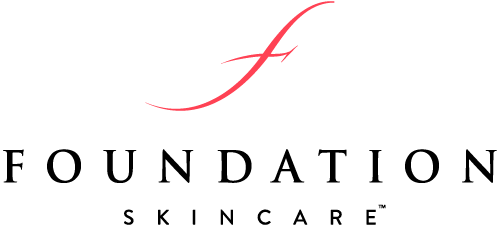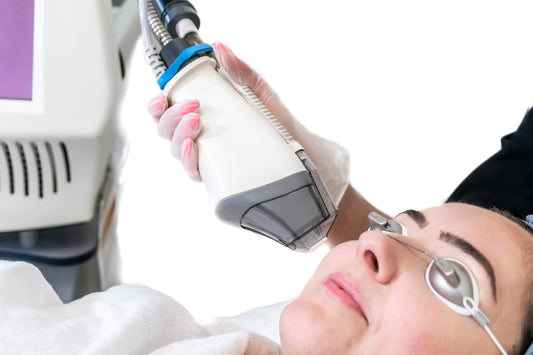Any type of hair loss that is more dramatic than normal levels of daily hair shedding falls under the umbrella of alopecia. Regardless of the specific type of alopecia someone is dealing with, hair loss can be devastating to men and women alike. It is further complicated by the fact that there are so many different factors that can lead to thinning hair, including stress, medication, aging, and hormonal fluctuations. This can make it challenging to pinpoint the exact root cause.
If you’re experiencing increased levels of hair loss, you should meet with a medical professional who can properly assess your specific situation. However, in this guide, we’ll do an overview of the most common types of alopecias to help you get a better understanding of what may be leading to your hair loss.
There are multiple types of alopecia, but they can be roughly divided into two categories: scarring and non-scarring alopecias. Non-scarring alopecias are much more common than scarring alopecias, and are often easier to manage and treat. Rarer scarring alopecias are diagnosed by skin biopsy, and should be managed by a board certified dermatologist.
Non-Scarring Alopecias
Androgenic Alopecia
Androgenic alopecia is one of the most common types of hair loss, and it can affect both men and women (referred to as male-pattern and female-pattern baldness, respectively). This type of hair loss is multifactorial, but is generally related to genetics and shifting hormones due to aging. It can be accompanied by acne, as well.
In men, androgenic alopecia can start as early as the teen years, and typically involves the hairline gradually receding in an “M” shape and balding at the crown. In women, it often presents as thinning along the part line, and typically doesn’t occur until after menopause.
Treatments may help slow down further hair loss, and in some cases can help regrow lost hair. A topical treatment that can be helpful for those dealing with androgenic alopecia is the Foundation Skincare Hair Serum. This treatment is formulated with highly effective ingredients like Capixyl, Stimucap, saw palmetto, niacin, and apple stem cells. It stimulates stem cells to help encourage growth, while also nourishing the cuticles and follicles to help prevent future loss.
For optimal results, you can also add in a hair supplement into your routine, such as the Foundation Skincare UnTangled Hair Supplement. This supplement is formulated with proven vitamins, minerals, and herbs that revive the growth cycle and increase keratin production for fuller hair. Key ingredients include marine collagen, horsetail extract, biotin, and vitamins A, C, and E.
Telogen Effluvium
Telogen effluvium is a rapid hair shedding that occurs around 90 days after a traumatic event, such as surgery, illness, or an emotional stressor. With this type of hair loss, the shock triggers a larger than usual number of growing hairs to more quickly shift into the resting phase in the hair growth cycle. As a result, these hairs end up shedding.
Telogen effluvium usually resolves without treatment, but patients can lose 20% to 30% of their hair during shedding. Acting quickly will help you get through the shedding and enter regrowth as soon as possible. Topical and supplement products (such as the Foundation Skincare Hair Serum and UnTangled Hair Supplement) can stimulate the follicles to help speed up the regrowth process to get your hair back to its pre-loss state.
Additionally, it’s essential that you address the trigger to ensure you don’t experience additional hair loss. For example, if stress was the root cause, putting practices in place to keep stress levels low (such as mindfulness and exercise) will reduce your risk of future hair loss.
Alopecia Areata
Alopecia areata is an autoimmune disease where the immune system attacks the hair follicles. This leads to hair loss that forms in a circular pattern. It can affect any area of the body, including the scalp, eyebrows, beard, arms, and legs. In the most extreme cases, this condition leads to complete hair loss on the scalp and body (called alopecia universalis), although this is rare.
Alopecia areata tends to affect those who have a family history of the condition. People with atopic dermatitis, asthma, hay fever, vitiligo, or thyroid disease are also more likely to get this condition.
Since it is an autoimmune disease, alopecia areata should be managed by a board certified dermatologist. While treatment isn’t always necessary, a medical professional may suggest treatments like topical or injected corticosteroids. The good news is that the immune system attack rarely fully destroys the hair follicles. This means that it is possible to regrow hair after it has fallen out (and you can speed up the process using our targeted serum and supplement, which you can find in our UnTangled Essentials Kit). That said, it’s still important to start treating the condition as soon as possible to minimize loss.
UnTangled Essentials Kit
• Engineered to work in tandem
• Visibly fuller hair in 90 days
Anagen Effluvium
Anagen effluvium is a form of rapid hair loss on the scalp and body that affects hair that is in the growing stage (also known as the anagen phase). At any given time, approximately 90% of hairs are in this phase of the hair growth cycle, which means there is typically a dramatic, sudden loss. The majority of anagen effluvium cases are caused by chemotherapy, where actively growing cells are killed by medications.
This type of alopecia should improve after the cessation of chemotherapy, and it doesn’t typically result in permanent hair loss. Therapies directed at aiding regrowth (such as the Foundation Skincare Hair Serum and UnTangled Supplement) can be used to speed up the process.
Scarring Alopecias
Discoid Lupus
Discoid lupus is a chronic autoimmune skin disease that leaves circular scarred areas on the scalp, ears, and face. One of the symptoms of this disease is patchy hair loss in the areas where scar tissue is formed.
This scarring process damages follicles and can lead to permanent hair loss. With that in mind, it’s important to get guidance from a medical professional as soon as possible to prevent this hair loss (and to manage the other symptoms). Additional symptoms may include peeling skin, blistered lesions, skin pigmentation, brittle nails, and ulcers on the inner lips. Treatments may include steroid or non-steroidal topical formulas, as well as antimalarial and immunosuppressive medications.
Lichen Planopilaris/Frontal Fibrosing Alopecia
Frontal fibrosing alopecia (which is a variant of lichen planopilaris, an inflammatory condition) is a poorly understood autoimmune disease where the immune cells attack the hair root and cause irreversible damage. This type of hair loss is permanent, and it leaves the skin looking shiny around affected areas. The hairline is typically the first area that is affected, but it can spread to anywhere on the scalp and body where you have hair.
With this disease, early diagnosis by a medical professional is key to stop it from progressing and prevent any future permanent loss. Treatment may revolve around a combination of therapies, including (but not limited to) finasteride or dutasteride, minoxidil, hydroxychloroquine, and/or laser therapy.
Central Centrifugal Cicatricial Alopecia
Central centrifugal cicatricial alopecia (CCCA) is a form of hair loss that most commonly affects Black women, although any gender or race can experience it. While the exact cause is unknown, it is believed to be tied to genetics.
With CCCA, the hair loss typically starts at the crown, and grows over time. It can also destroy the follicles and lead to permanent loss, so early treatment under the guidance of a medical professional is essential. Regrowth is possible when the condition is addressed early. Treatment options can include topical or injected corticosteroids, as well as antibiotics to reduce inflammation.
When to See a Dermatologist
Hair loss can be a sign of an underlying issue, so it’s important to pay attention to your body’s signals and seek medical attention when necessary. If you experience any of these symptoms on the scalp or around areas of the body where hair grows, you should see a board certified dermatologist:
- Inflammation
- Severe itching
- Shiny white areas of scarring
- Round patches of loss
- Loss of eyebrows or body hair






